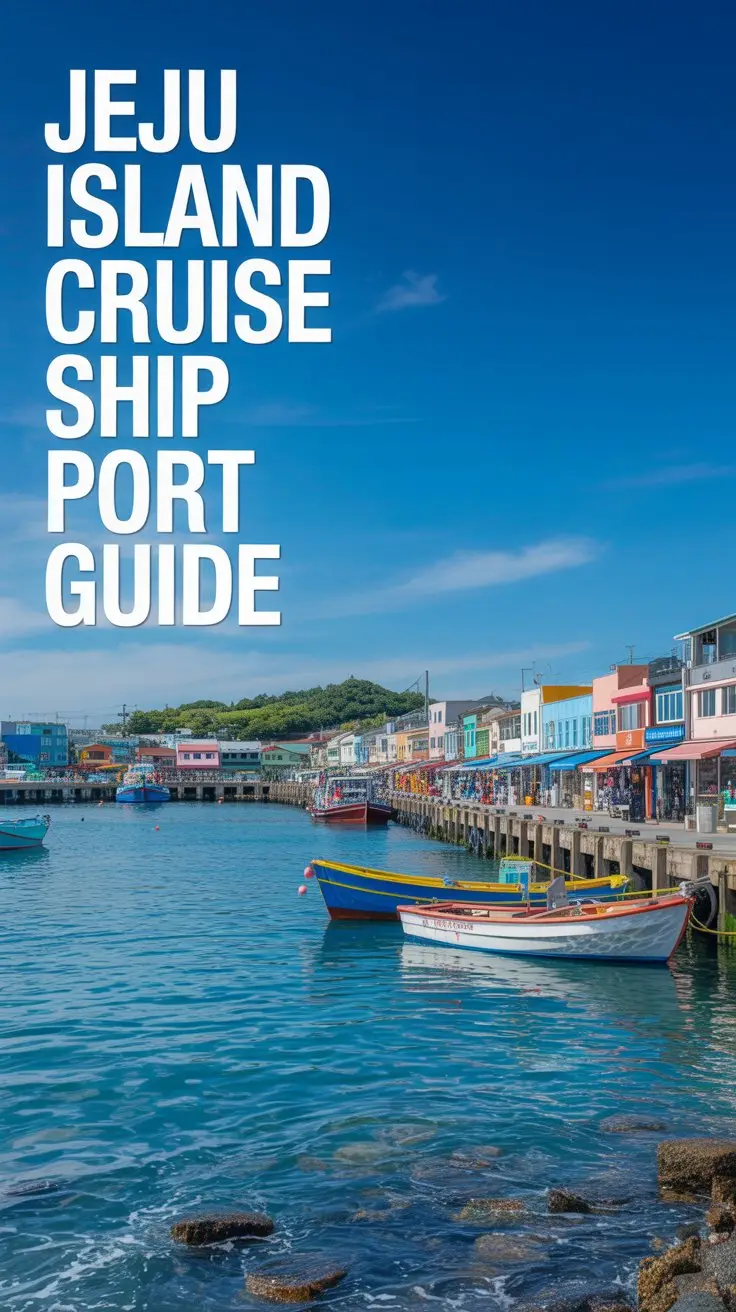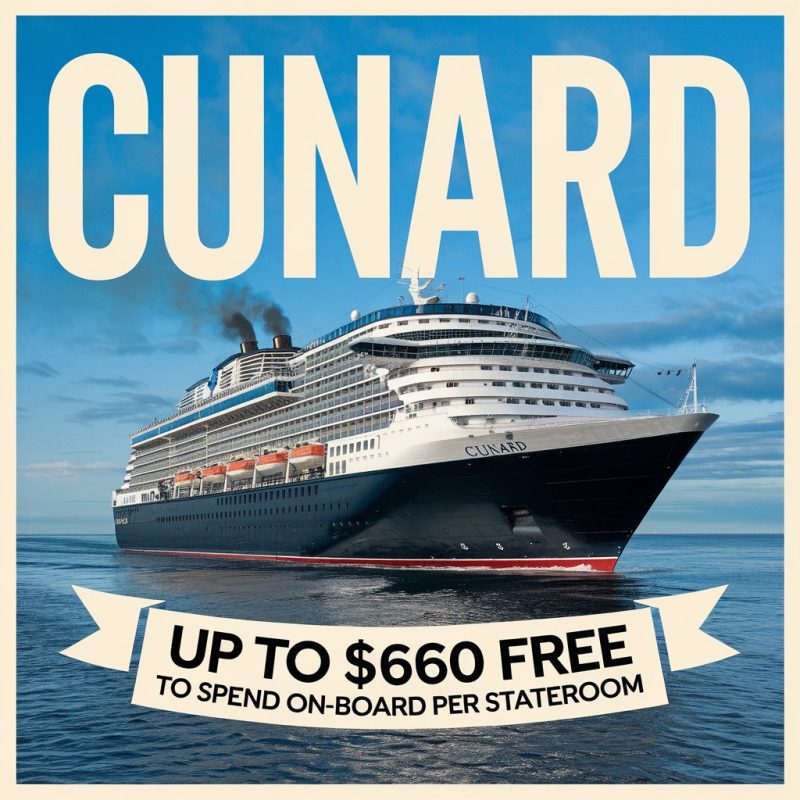Jeju Island operates two cruise ports: Northern Jeju Port handles ships under 140,000 GT, located 2km from downtown. Southern Seogwipo Port accommodates vessels up to 220,000 GT with two berths. Both provide shuttles, ATMs, Wi-Fi. Transportation includes buses, taxis (₩3,800 base fare), car rentals (₩60,000/day). Main attractions: UNESCO sites Seongsan Ilchulbong, Manjanggul Lava Tube, waterfalls, Haenyeo divers.
The Insider’s Take on Korea’s Volcanic Paradise
Here’s what most cruise guides won’t tell you: Jeju Island isn’t just another Asian port stop – it’s a volcanic UNESCO wonderland with two completely different cruise experiences depending on where your ship drops anchor.
I’ll never forget my first time docking in Jeju – I spent an hour wandering around the wrong side of the terminal looking for a taxi while other passengers had already made it to the waterfalls. That day taught me everything I needed to know about how crucial it is to understand which port you’re using and have your transport sorted before you step off the ship.
The island operates a dual-port system that actually makes sense once you understand it. Northern Jeju Port handles smaller ships and drops you walking distance from the city’s markets and cultural sites. Southern Seogwipo Port welcomes the mega-ships and positions you perfectly for waterfalls and natural wonders. Both have their merits – if you know what you’re doing.
Where is Jeju Island Cruise Ship Port
Understanding Jeju’s Dual Port Setup
Jeju Island’s two-port system serves different ship sizes and puts you near completely different attractions. Northern Jeju Port accommodates vessels under 140,000 GT with a 390-meter quay, sitting just 2km from downtown Jeju City. Meanwhile, Seogwipo Gangjeong Port, which opened in 2017, handles the giants – ships up to 220,000 GT can dock at its two berths with 420-690 meter quays and 16-17 meter depth.
Here’s the breakdown that matters:
Northern Jeju Port (KRCHA)
- Maximum capacity: Ships under 140,000 GT
- Distance to city: 2km (easy walk or quick taxi)
- Best for: Cultural attractions, markets, city exploration
Seogwipo Gangjeong Port (KRSPO)
- Maximum capacity: Ships up to 220,000 GT
- Two berths for simultaneous docking
- Best for: Natural attractions, waterfalls, southern coast scenery
The smart money says this setup helps distribute cruise traffic effectively. South Korea welcomed 810,000 cruise tourists aboard 414 ships in 2024 – nearly tripling from 273,000 tourists the previous year according to the Ministry of Culture, Sports and Tourism. That’s serious growth, and Jeju’s dual-port system handles the volume without turning your gangway into a cattle chute.
Navigation Note: On Google Maps, look for “Jeju International Passenger Terminal” or “Jeju Ferry Terminal” – the northern port handles both ferries and cruise ships at the same facility.
Terminal Facilities That Actually Work
Don’t expect cruise terminal shopping malls here – Jeju keeps it functional and efficient.
Northern Jeju International Cruise Terminal
| Feature | Details |
|---|---|
| Terminal services | ATMs, currency exchange, free Wi-Fi |
| Shopping | Convenience stores, limited tax-free options |
| Transport | Free shuttles every 20 minutes to markets |
| Immigration | Can get backed up during peak times |
Seogwipo Gangjeong Terminal
| Feature | Details |
|---|---|
| Capacity | Two 220,000 GT ships simultaneously |
| Services | Basic facilities, tourist information |
| Transport | Shuttle service to downtown Seogwipo |
| Advantage | Faster immigration processing |
Both terminals offer the basics without unnecessary frills. You’ll find tourist information desks, but the northern terminal’s can get swamped when multiple ships arrive. Pro tip: grab your maps and transport info from the less crowded southern terminal if you’re docking there.
Getting Around Jeju: Transportation That Makes Sense
Your transportation strategy depends entirely on which port you’re using and how adventurous you’re feeling.
From Northern Jeju Port
Free Options:
- Shuttle to Gwandeokjeong Market (every 20 minutes)
- Walking to nearby attractions (20-25 minutes to shopping district)
Public Transport:
- Buses 315, 411, 412, 415 to downtown areas
- T-money cards for seamless transfers (40-minute window)
- Airport Limousine Bus 600 connects major areas
From Seogwipo Port
Primary Options:
- Free/low-cost shuttle to downtown Seogwipo (10-15 minutes)
- Taxis waiting outside terminal gates
- Limited public transport compared to northern port
Island-Wide Exploration
Rental Options:
- Cars: Around ₩60,000 per day (International Driving Permit required)
- Scooters: ₩25,000 daily
- Private taxi tours: ₩120,000-₩180,000 for full day (4-6 people)
Smart Transport Hacks:
- Download KakaoMap instead of Google Maps (works better locally)
- Use k.ride app for taxi bookings without language barriers
- Eastern District Tourist Bus 810 hits 20+ attractions including Seongsan Ilchulbong
No Uber here, and that’s actually fine – local taxi drivers know the best routes and hidden spots that ride-share algorithms miss.
Must-See Attractions by Port Location
Your docking location determines your day’s possibilities. Here’s what works from each port:
Northern Jeju Port Access
Walking Distance (20-30 minutes):
- Dongmun Market for street food and local life
- Gwandeokjeong Pavilion (15th century)
- Small shopping and dining area near pier
Easy Public Transport:
- Jeju City cultural sites
- Traditional markets
- Urban attractions
Southern Seogwipo Port Access
Quick Trips (10-20 minutes):
- Cheonjiyeon Waterfall
- Jeongbang Waterfall (falls directly into the sea)
- Seogwipo Olle Market
- Jungmun Tourist Complex
Natural Wonders Nearby:
- Dramatic southern coastline
- Multiple waterfalls within short taxi rides
- Better access to hiking trails
Universal Access (From Both Ports)
UNESCO World Heritage Sites:
- Seongsan Ilchulbong (Sunrise Peak crater)
- Manjanggul Lava Tube
- Hallasan National Park
Cultural Experiences:
- Haenyeo women divers (legendary breath-holding pearl divers)
- Black Pork BBQ restaurants
- Traditional stone statue (dol hareubang) sites
Seasonal Bonus: April-May brings azalea blooms on Hallasan mountain – purple mountainsides that justify the trip alone.
Practical Port Day Strategies
Immigration and Timing
- Budget 30-45 minutes for immigration clearance
- Ships typically arrive 6:30-8:30 AM
- Final boarding usually 30-45 minutes before departure
- Last shuttles typically run until 2:45 PM from Jeju City
Money and Communication
- Korean Won (KRW) preferred everywhere
- Currency exchange available at terminals
- Cash essential for street food and small vendors
- Free terminal Wi-Fi limited to lounge areas
Transportation Tip
Some attractions are 1.5+ hours each way – be realistic about what you can accomplish. Choose between intensive city exploration or focused natural site visits, not both.
Leave Time for Return:
- Immigration queues at departure
- Shuttle schedule cuts off mid-afternoon
- Traffic can be unpredictable during peak tourist seasons
Weather Considerations
Typhoon season (May-October) affects about one-third of cruise schedules, with August-September being particularly problematic. Ships may change itineraries or skip Jeju entirely during severe weather.
Common Questions
Can I walk between the two ports? Absolutely not – they’re on opposite sides of the island, roughly 40km apart. Your ship’s assignment determines your day’s geography entirely.
Do I need special documentation for Jeju? Most cruise passengers get a transit visa stamp upon arrival. Allow extra time for this process, especially at the northern terminal during busy periods.
Are there luggage storage facilities near the ports? Yes, Radical Storage operates at Cheonjin Port for ₩7,000 per bag daily. Book through their app – no size restrictions and 24-hour support.
What’s the deal with the Haenyeo divers everyone mentions? These are traditional female free-divers who harvest seafood using only their breath-holding abilities – some can stay underwater for over two minutes. It’s a UNESCO-recognized cultural practice, and watching them work is genuinely extraordinary.
Can I use international ride-sharing apps? No Uber or Lyft operates here. Use the k.ride app for English-language taxi booking, or just flag down the abundant local taxis.
Is the island wheelchair accessible? Seogwipo port has better accessibility features than the northern terminal. Notify your cruise line about mobility needs at least a month in advance for proper gangway arrangements.
Related Destinations: Exploring more of South Korea’s cruise scene? Check out South Korea Cruise Ports Guide for the complete picture, or discover Incheon Seoul Cruise Ship Port Guide for the capital region experience. For other Asian adventures, browse our comprehensive Asia Cruise Ship Ports Guide.



2 responses
Do you realize that this article “Jeju Island Cruise Ship Port Guide” has contradictory information about the Northern Jeju Port? You say that it can accommodate a ship of up to 80,000 GT in 2 places but then says it can accommodate up to 140,000 GT in another. Please update/correct. This is very confusing.
Hi Barbara, thank you so much for pointing out our mistake. I’ve updated the article now so there is no confusion with the size of the ships and where they dock at Jeju.